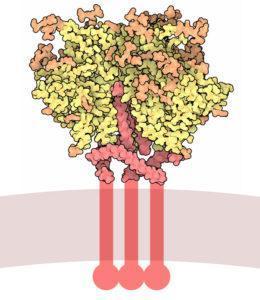One of the challenges in HIV vaccine research is developing an immunogen which elicits a strong immune response; strong enough to protect against HIV acquisition. One strategy has been the development of soluble HIV trimers which mimic the HIV Envelope (Env).
These trimers have similar antigenicity to the HIV Env, are well folded, predominantly in the closed conformation and are highly thermostable. One of these Env trimers was derived from the subtype A virus, BG505.
Unfortunately, the BG505 trimer was not able to elicit broad responses upon immunization trials in animals and therefore new strategies must be developed to boost the immune response upon trimer immunization.
One strategy, used by researchers at The Scripps Research Institute, USA, was to use nanoparticles to present the trimer to the host. The advantage of these nanoparticles is that the optimal number of Env trimers needed to stimulate the immune system can be added and displayed through the nanoparticles.
The team, led by Jiang Zhu, displayed the gp140 BG505 trimer on a ferritin nanoparticle. Ferritin is a 24 subunit cytosolic protein which regulates the amount of iron found in the body. They found that the trimer-nanoparticle complex was bound strongly by different broadly neutralizing antibodies. Very poor binding was observed with non-neutralizing antibodies which is desirable since the immunogen should elicit neutralizing responses only. The nanoparticle presenting the BG505 trimer also had high stability.
The researchers also tested how well these nanoparticles could stimulate B-cell production. The group engineered a range of nanoparticles displaying different segments of the HIV Env. They found that the nanoparticles displaying multiple gp120 or gp140 proteins were able to stimunlate B-cells but the gp140 trimer had much weaker responses.
These data reveal that the HIV trimer can be successfully presented on nanoparticles. This research could pave the way for more effective HIV immunogens. However, the nanoparticles were unable to elicit strong immune responses through B-cell triggering. Therefore, more research is needed to understand how to better activate the immune response by nanaoparticles.
Journal Article: He et al., 2016. Presenting native-like trimeric HIV-1 antigens with self-assembling nanoparticles. Nature Communications
Article by Thandeka Moyo












